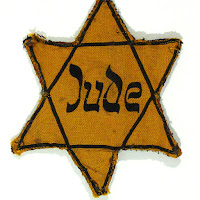In order to be complete in his telling, however, Saxo Grammaticus relates two origin stories for Starkad. In one, Starkad is an Estonian from east of the Baltic Sea. Grammaticus could not bring himself to leave out the earlier version of Starkad's origin: that he was a jotun ("giant") with eight arms. (Alternately, Starkad was a human warrior who was the son or grandson of a jotun also named "Starkad" or maybe "Ali-Starkad." That's the way it goes when legend and history collide.)
In either case, Starkad possessed greater-than-usual size and strength, and no one could defeat him. While on a viking expedition with the petty king Vikar, the ship's progress was halted by a strong wind. The crew thought a blood sacrifice to the gods was the answer, and Vikar was chosen. Starkad made a noose to put around Vikar's neck, saying it was just for show, but Starkad either was lying or the noose magically became stronger and started strangling Vikar. Starkad finishes him with a sword.
In another version of this story, the lot falls to Vikar and the crew puts off the decision to the following day. Then Starkad's foster-father, Grani Horsehair, reveals himself to be Odin in disguise. In exchange for the sacrifice, Odin will bless Starkad with three lifetimes, the best weapons, riches, victory in battle, a noble reputation, and the gift of poetry. Thor, however, because he is a foe to giants, objects to these blessings because of Starkad's jotun heritage. He curses Starkad to counter the blessings: Starkad will commit a crime in each lifetime, he will never have children, he will never possess land, he will always be wounded in battle, he will never be able to remember his poems, he will be hated by the common people.
With the blessings and curses done, Odin gives Starkad a spear which appears to be simply a reed stalk; Starkad uses this to sacrifice Vikar to Odin—his first evil deed.
Tomorrow I'll relate the rest of his life, including how he tired of it and had himself killed, but even in death he showed his ferocity.



























